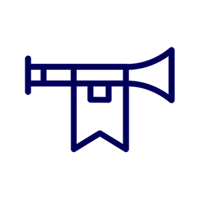
Rachel Dunn
Marine Pilot at MOD - Civil Service
What is a typical seafarer? You are. My whole career has given my a self confidence in the ability to go out and get. Never ask “why should it be me” rather “why shouldn’t it be me”.
About Rachel...
Who am I?
"Manager, Adaptable. Although I plan the pilotage in, it never always goes to plan due to prevailing circumstances and conditions, so dynamic risk assessments are always ongoing with the safety of those around being the priority.Good organiser. The pilotage is planned and people need to know where they are expected to be and their tasks to carry out the plan.Motivation. Both myself and others, so the task is carried out to the best of our abilities.Influencer Good at explaining. I need to explain the pilotage plan , where we will meet potential problems/hazards and how they will be resolved.Thinking outside the box. There is more than one way to execute the same manoeuvre although he principles remain the same.Leadership. Leading by example, with confidence. Encourage people to put their ideas forward but then be ale to explain why the plan is best carried out as I plannedWork on own or in a team. I have to be able to fit into a bridge team and work with them. I might never have met the team before and there could also be a language barrier, but I need to be able to integrate and work with the resources available. When stuck on a bridge roof, I could be on my own so have to be confident in the whole operation.CampaignerPersuasive. Being able to get the bridge team to carry out the move as I have planned due to my ability and knowledge."
What do I do?
"My main task as a pilot is to safely get the ship from A to B, be it from berth to berth or sailing a vessel in or out. The safety of both the vessel and the tug crews I am operating with, the safety of the port and all stakeholders and the environment.No two tasks are ever the same, even if it is the same size of ship moving to the same berths. The variance in elements always alter the way the vessel reacts I have carried out the same move in light winds in beautiful sunshine or alternatively in 50 to 60 mph and rain. You feel the elements, especially on the cold moves as I have to stand outside on the exposed bridgewing. Sometimes the inclement weather, although more of a challenge gives me more of a sense of achievement than the benign conditions.The buzz I get when the vessel is all secure on her berth especially if the weather has been unkind or the vessel has had a defect which we’ve had to work around. If the vessel is not responding as it should and everything appears to be going wrong, I have the knowledge and level headedness to resolve the situation and create a calming influence within the bridge team."
How did I get here?
"After A’levels, I joined Shell Tankers as a deck cadet for a three year apprenticeship. Time spent at sea and at college, I qualified with my second mates ticket sailing as third mate with Shell. The roll of the Merchant Navy is to safely carry cargo from port to port, so the cargo can be loaded or discharged. As a qualified officer, I was in charge of a navigational watch for 8 hours in a 24 hour period at sea, and cargo watch whilst in port. I safely navigated ships from 30,000 tonnes to 300,000 tonnes around the world. After sufficient navigational watch keeping time was obtained, I returned to college for a year to study for my Chief Officers Certificate.On passing, again back to sea for more seatime before returning to college to sit my Masters oral exam. I gained my Certificate of Competency 2/II (unlimited), (Masters Certificate of Competency) that would enable me to sail as Master on any British flagged merchant vessel. I then left Shell to join Wightlink, where I worked as Chief Officer before finally becoming one of their Senior Masters.I left Wightlink to become an Admiralty Pilot in Portsmouth Harbour. A three year training program to become an unlimited pilot .This involved a number of simulator courses and numerous moves on mainly naval vessels both hot and cold. After the first year, I qualified as a restricted pilot and could pilot vessels up to 150 meters, after a further 2 years, I became an unlimited pilot.I have now just started training as a pilot for he new aircraft carriers which are 280meters long. "
The life I live
"I am happily married with three grown daughters, dispelling the myth that you can not maintain a career at sea and have children. Enjoy cycling, walking with my dog. I used to enjoy skiing until I broke my leg doing the same. "
My typical day
"No two days at my work are ever the same due to the variance of shipping. Shipping arrives into port 24 hours a day 7 days a week, regardless of the weather. On arrival at work, I’ll check my specific moves.I need to plan the passage for an Algerian ship. EL Mellah is 110 meters long with a draught of 6.3 meters. This draught decides which route I will bring the vessel into Portsmouth. In addition I know where the vessel’s to be berthed and which tugs have been allocated. We pilot in all sorts of weather, be it wind, rain, snow, fog or a combination of all the elements. Once my passage plan has been written, I collect my two handheld VHF radios and put on my pilots’ coat. This orange coat has an inbuilt lifejacket, a Portable Pilot Unit (gives my location should I fall in the water on ships radars) and a flashing light; it is a relatively heavy jacket. I board the pilot boat that takes me to the ship. A 40 minute journey has me meeting the ship at anchor. I clamber from the warmth and security of the cabin, out onto the foredeck and up the side of the vessel by a pilot ladder. On arrival on board, I am supplied with the ship’s master/pilot exchange sheet which has details of the ship’s handling characteristics. A discussion of our route with expected traffic, tug securing positions and berth location. We navigate into the port where I am constantly monitoring the ship’s position. I must become an intricate part of the bridge team so we can get the vessel safely into port. Once through the harbour entrance, we must turn the ship at the top of the harbour before proceeding back to our berth. I am instructing the tugs on how and when to push or pull the vessel. The vessel berths safely on her berth and with all lines secured, I wish the Captain an enjoyable stay in Portsmouth, get my paperwork signed by him before proceeding off the ship and past all the awaiting dignitaries."
My qualifications
"2X A Levels (Maths and Physics)Certificate of Competency 2/II Unlimited"
Rachel's Photos







